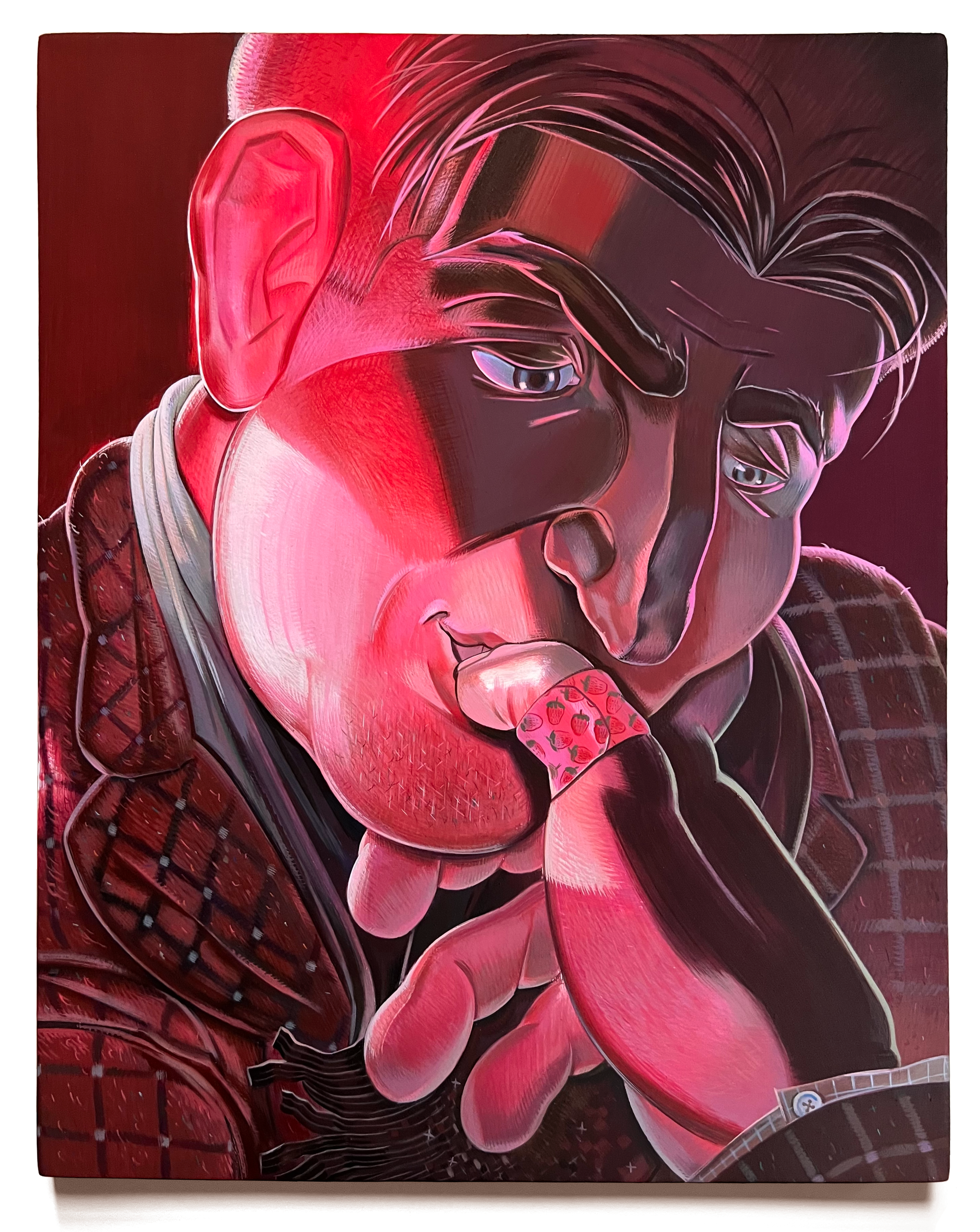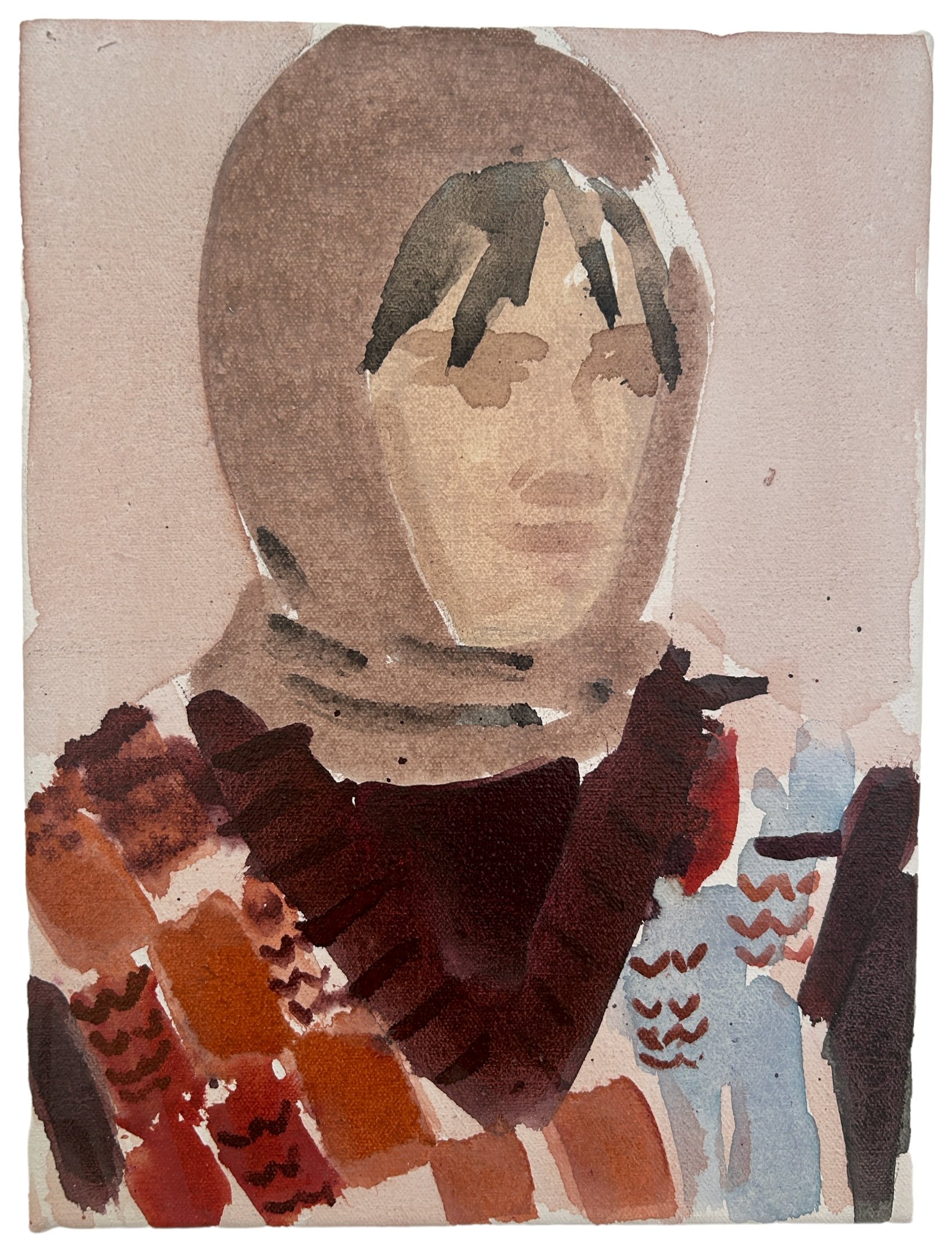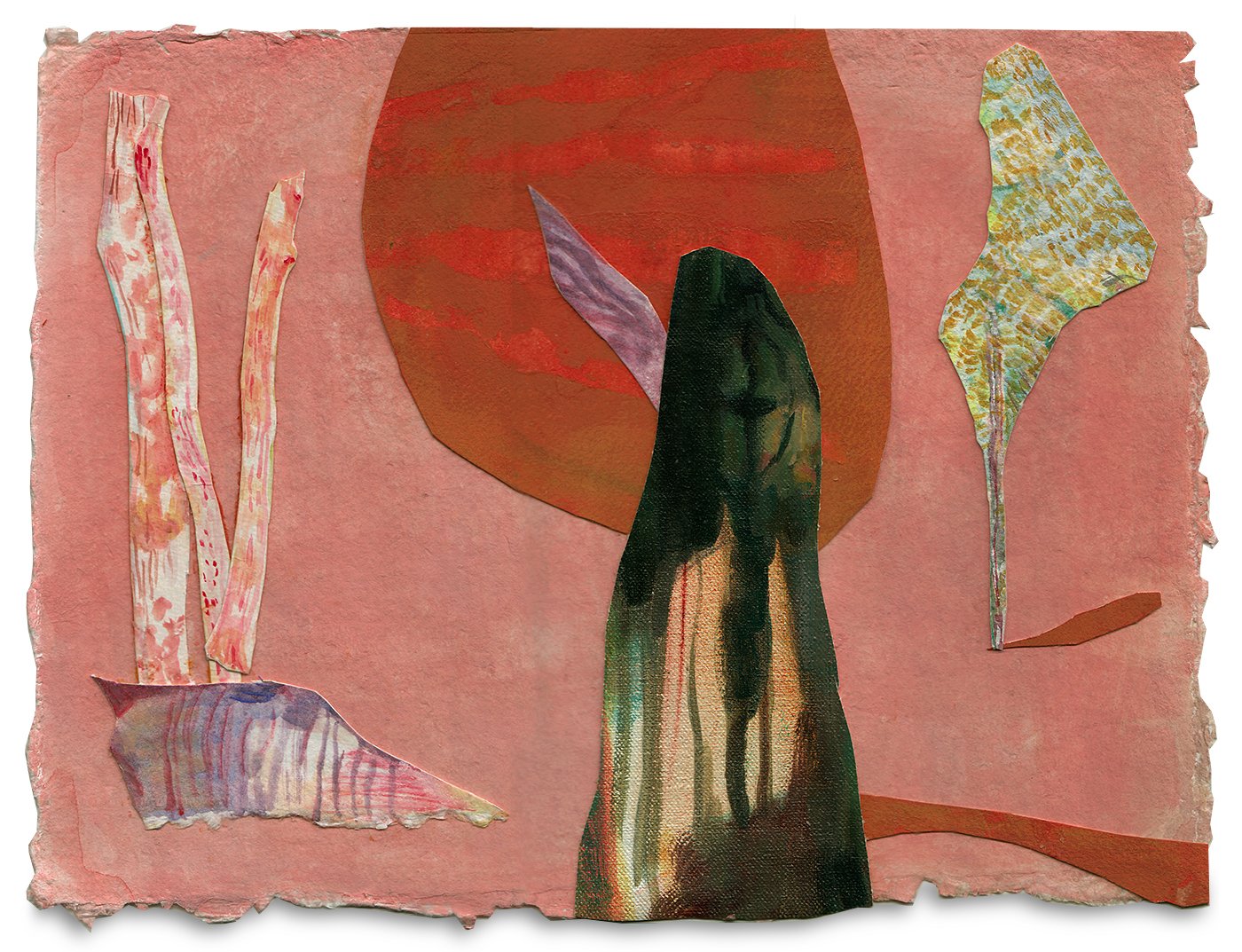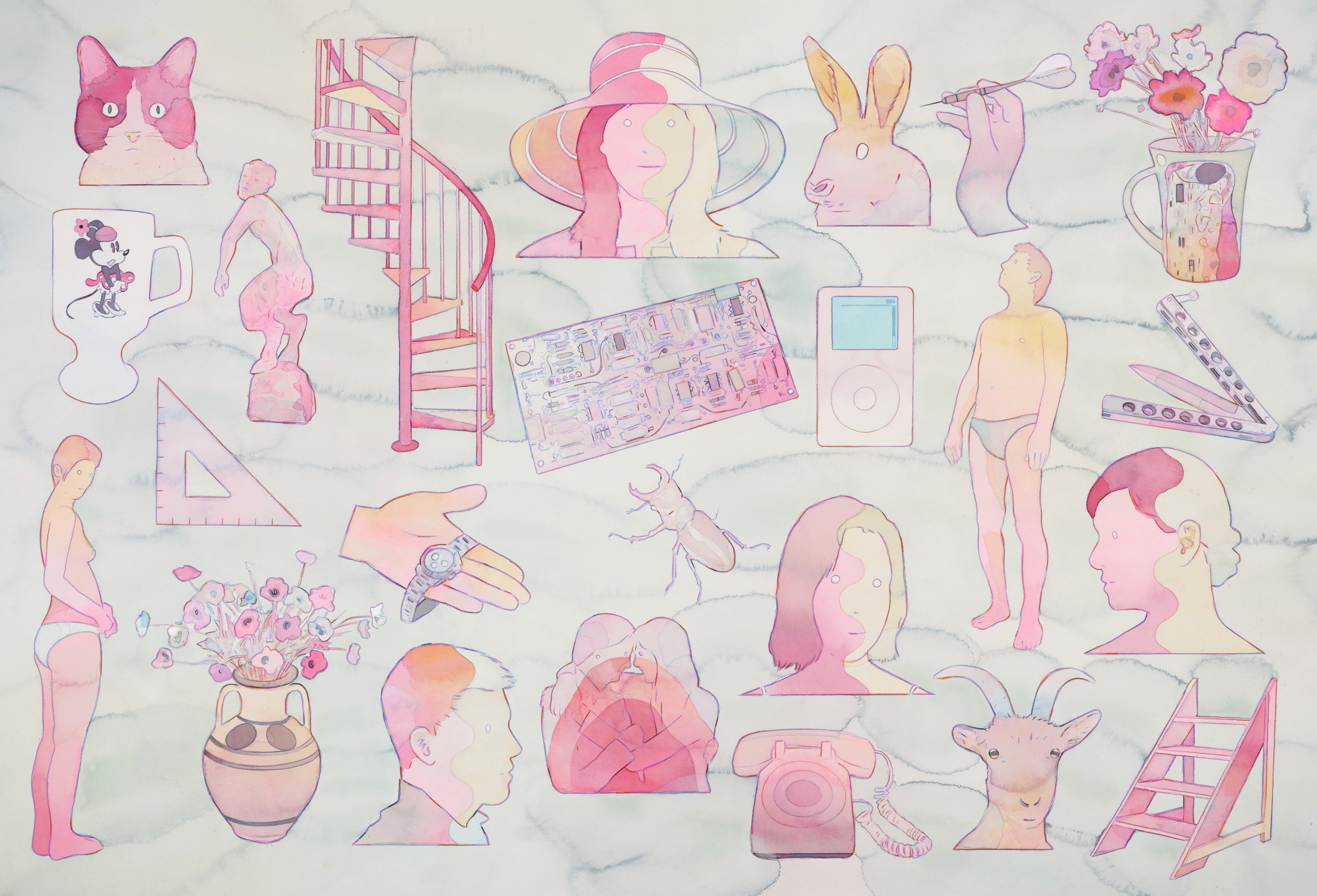April 1st - 22nd, 2023
Auxier Kline is pleased to announce the opening of Blush, a group exhibition featuring new works by nine artists, curated to explore the psychology of the color pink in the medium of paint.
The color pink, across all its possible shades and hues, is a color of contradictions. It can be manipulated across various connotations to ascribe far ranging psychological meanings. Softer pastel pinks can invoke feelings of innocence, nostalgia, femininity, calmness, compassion, and optimism. These shades of pink were marketed by clothing manufactures as dainty and girly starting in early 20th century America as a way to color code children’s wear by gender in order to sell more products, leading to the Barbie and princess pink associations with little girls that persist to this day. Passive pinks have also been used by prisons and psychiatric wards to paint detention cells in hopes that they would calm agitated prisoners and patients, becoming known as “drunk-tank pink.” Sports organizations have used these same shades to paint opposing team’s locker rooms to keep their opponents pacified and throw them off their game.
In contrast, vibrant darker pinks are associated with more adult themes such as burning love, the erotic, and sensuality. In the United States, these shocking pinks became associated with sex icons such as Marylin Monroe’s famous dress in Gentlemen Prefer Blondes, Elvis Presely’s pink Cadillac, and the Victoria’s Secret branding. In Japanese culture, pornographic films are known as “pink film”, and in France, sex hotlines are known as “téléphone rose” (pink phone).
Pink also has long associations with politics. In Germany, male sex workers were referred to as “Rosarote”, which lead to the upside down pink triangle becoming the identifying marking for gay and lesbian prisoners in Nazi concentration camps. The pink triangle was later flipped right side up and colored fuschia by Act Up for their Silence = Death logo in the 1980s during the AIDS epidemic. The color is also synonymous with Feminism and women’s healthcare. The pink ribbon has long been a symbol of breast cancer awareness. More recently, the vibrant pink pussyhat became an iconic symbol of defiance and female empowerment during the Women’s March in 2017 to protest the election of Donald Trump.
The exhibition Blush introduces new paintings by nine contemporary artists that reflect what the color means to them personally and in their practices, adding to the rich and complex relationship our culture has with the color pink.
Jeremy Sorese, 'Linger', acrylic on canvas-mounted board, 20 x 16 inches, 2023
Hank Ehrenfried, "Hotel Saint Marc in January", oil on linen, 15 x 12 inches, 2023
Rachel Rickert, "Infrared, oil on panel, 12 x 12 inches, 2019-2020
Matt Zaccari, "Ian", oil on canvas, 34 x 55 inches, 2023
Matt Zaccari, "Annie", acrylic on canvas, 12 x 9 inches, 2023
Dan Gluibizzi, "The basket", watercolor, acrylic and colored pencil on paper, 18 x 14 inches, 2023
Dan Gluibizzi, "River drinks", watercolor, acrylic and on paper, 10 x 8 inches, 2019
Amy Talluto, "Winged Figure" 2021, painted paper and canvas collage 9x 12 inches (framed), 2021
Scott Csoke, "Cakes and Tureens", acrylic on panel, 10 x 8 inches, 2023
Scott Csoke, "Christmas Cactus", acrylic on canvas, 14 x 11 inches (framed), 2023
Amy Talluto, "Sun Holder (After Ingres)", oil on panel, 30 x 24 inches, 2023
Marissa Graziano, "Olivia", oil on canvas, 26 x 16 inches, 2023
Alexandra Smith, "Sitting and Waiting", oil on paper, 10 x 10 inches (framed), 2023
Dan Gluibizzi, "The triangle", watercolor, acrylic and colored pencil on paper, 41 x 60 inches, 2023
Scott Csoke, "Katie's House", acrylic on panel, 14 x 11 inches, 2023
Scott Csoke, "Yellow Bed in Pink Room", acrylic on panel, 14 x 11 inches, 2023

















